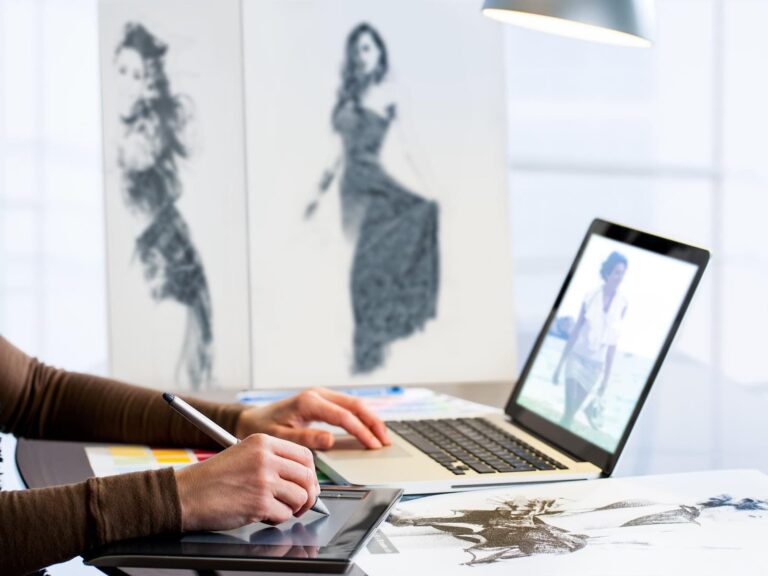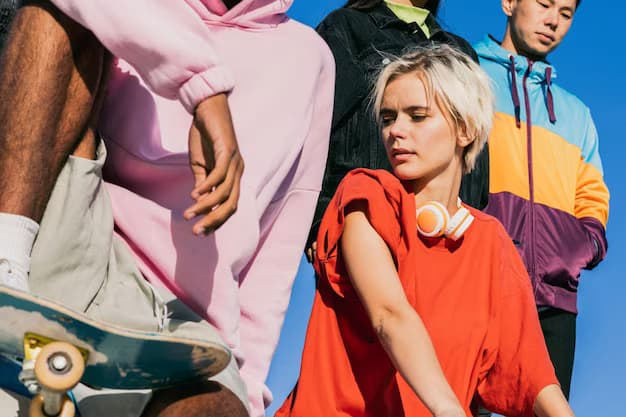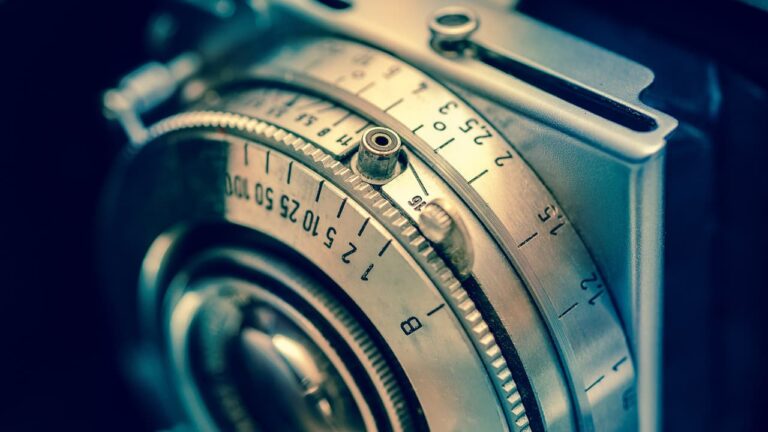Ever flipped through a glossy fashion magazine and wondered how someone landed that dream job? Behind every successful career move in the fashion world lies not just an impressive résumé, but an intriguing cover letter. While a résumé presents the crisp outlines, the cover letter paints the story. Let’s journey into why the cover letter in fashion is akin to the runway reveal after months of preparation.
The Résumé: A Snapshot of Your Journey
Just as a model’s portfolio showcases their best looks, a résumé is a structured presentation of one’s professional milestones. But, much like a picture, it has limitations.
- Black and White Achievements: The résumé highlights where you’ve been and what you’ve achieved, but it’s devoid of the journey’s colorful details.
- Static Display: It provides a snapshot that might not capture the dynamism and passion of the candidate.
- Limited to Bullet Points: In the world of fashion, where creativity and individuality reign supreme, bullet points can sometimes feel too restrained.
The Cover Letter: Your Personal Runway
Imagine you’re backstage at a fashion show. The buzz, the lights, the adrenaline – that’s what a cover letter brings to the table.
Personal Touch
A cover letter provides space for your unique voice. Remember that one-of-a-kind vintage find? Your cover letter is your chance to showcase that uniqueness.
Narrative Flow
It takes the reader through your journey, from humble beginnings, challenges faced, and triumphs celebrated.
Culture Fit
Fashion houses are like families, each with its unique culture. Through your cover letter, they can gauge if you’re a cultural fit.
Comparing Apples and Oranges: Cover Letter vs. Résumé
| Feature | Cover Letter | Résumé |
|---|---|---|
| Length | Longer, detailed | Concise |
| Tone | Personal, informal | Professional, formal |
| Content | Personal journey, aspirations | Achievements, qualifications |
Anatomy of A Fashion-Forward Cover Letter
- The Opening Act: Begin with a captivating story, maybe that time you organized a sustainable fashion show on a shoestring budget.
- Heart of the Matter: Discuss challenges, personal growth, and the quintessential moments that shaped your fashion ideology.
- End with A Flourish: Conclude with your aspirations and how the potential role aligns with them.
Why Every Fashionista Should Invest Time in Their Cover Letter
In a world that values branding, your cover letter is your personal brand statement.
- Standing Out in a Crowd: In an industry teeming with talent, it’s your pitch that makes you memorable.
- Window to Your Soul: Beyond skills, fashion is about spirit, creativity, and vision. All of which the résumé might not capture.
- Networking Nuances: Sometimes, it’s not about the job but the connections. A well-crafted cover letter can open doors to mentorship opportunities and collaborations.
Making it Work: Tips for a Trendsetting Cover Letter
- Know Your Audience: Tailor it for the brand you’re applying to. Speak their language.
- Keep It Authentic: Honesty resonates. Avoid the temptation of exaggerated tales.
- Proofread: In fashion, details matter. Ensure your cover letter is free of errors.
Behind the Seams: The Emotional Quotient of a Cover Letter
The fashion world, with its shimmer and glamour, often veils the very real emotions, struggles, and aspirations of those who tread its hallowed halls. The thing about the fashion industry is that it’s not just about the clothes; it’s about the stories they tell, the lives they’ve touched, and the dreams they represent. And this is where the cover letter’s strength truly shines.
Emotion Over Bullet Points
A résumé, for all its merits, is somewhat clinical. It’s a distilled version of your achievements, like a label that tells you the material of the dress but not where the fabric was sourced or who wove it. A cover letter, on the other hand, allows for a deep dive. Did a personal tragedy lead you to champion sustainable fashion? Did your travels to a particular corner of the world introduce you to textiles that changed your design perspective? The cover letter is where these tales find their voice.
The Subtlety of Soft Skills
The fashion world values soft skills as much as technical prowess. Empathy, communication, resilience – these might not find a place in the résumé’s bullet points but are invaluable in the interconnected realm of fashion. The cover letter provides a space to highlight these, not as standalone words but woven into your personal and professional narrative.

Walking the Talk: Real-World Cover Letter Success Stories
Every seasoned professional in the fashion world can point to a moment when their cover letter made all the difference. Be it landing that coveted internship or pivoting to a role they were passionate about but lacked direct experience in; the cover letter has been the unsung hero.
The Risk-Taker’s Narrative
Jane, a seasoned merchandiser, once shared how her desire to move into fashion editorial seemed like a distant dream. While her résumé was filled with impressive sales figures and brand collaborations, it didn’t reflect her storytelling capabilities. In her cover letter, she chronicled her journey – the stories she unearthed while on buying trips, the artisans she met, the tales behind every weave and stitch. It was this narrative-driven cover letter that bagged her an assistant editor’s role in a leading fashion magazine.
The Visionary’s Pitch
Mark, a tech professional with a penchant for sustainable fashion, always felt out of place in his corporate role. His résumé boasted of coding languages and software deployments, seemingly miles away from fashion. But his cover letter was his masterpiece. He spoke of the intersections of technology and fashion, how data could predict sustainable trends, and how artificial intelligence could personalize fashion choices, reducing waste. This vision, articulated in his cover letter, landed him a role as a strategist in a leading fashion tech startup.
Unraveling Bottega Veneta: The Silent Powerhouse of Fashion
Bottega Veneta, an Italian luxury brand, has etched its place in the world of high fashion not through brash displays, but rather an unwavering commitment to craftsmanship, quality, and discretion. Founded in 1966 in Vicenza, Veneto, the brand’s philosophy is summed up in its slogan, “When your own initials are enough.” Here’s an exploration of the brand and the lessons it offers for crafting an effective cover letter.
Understanding the Brand
- Signature Intrecciato Weave: One of the standout features of Bottega Veneta products is the Intrecciato technique, a unique leather weaving method that has become synonymous with the brand. This speaks to the importance of having a distinct personal touch, which should be evident in your cover letter.
- Discreet Luxury: Bottega Veneta prides itself on its understated elegance. In a similar vein, your cover letter shouldn’t be about boasting, but rather subtly presenting your strengths and experiences.
- Timeless Appeal: Unlike many luxury brands that focus on seasonal trends, Bottega Veneta’s designs are timeless. When crafting your cover letter, think of skills and experiences that have long-term value to employers.
The Bottega Veneta Influence: Crafting a Cover Letter that Speaks Volumes
Drawing parallels from Bottega Veneta’s approach, here’s how one can craft a cover letter that embodies these principles:
1. Focus on Craftsmanship:
Much like the intricate Intrecciato weave, focus on the quality of your content. Every sentence should add value, much like every stitch in a Bottega product.
2. The Power of Subtlety:
Your achievements are significant, but presenting them with humility and authenticity can set you apart. 3. A Timeless Narrative: Speak to experiences and skills that aren’t just current buzzwords but have a lasting impact in your field.
Decoding Fashion Brands: Comparative Analysis
Given the focus on Bottega Veneta, it’s essential to understand how it holds against other luxury brands. Here’s a brief comparative table to provide context:
| Brand | Founded | Signature Style | Brand Philosophy |
|---|---|---|---|
| Bottega Veneta | 1966 | Intrecciato Weave | Discreet luxury, craftsmanship |
| Gucci | 1921 | GG monogram, Red-green stripe | Eclectic, contemporary, romantic |
| Prada | 1913 | Triangle logo plaque, Saffiano leather | Innovative, sophisticated, and not dictated by seasonal trends |
| Louis Vuitton | 1854 | LV monogram, Damier pattern | Journey, innovation, and timeless style |
Conclusion
In the grand tapestry of the fashion world, both the résumé and cover letter hold their own. While the résumé provides the structured foundation, the cover letter adds the intricate embroidery, telling a story only you can. So, next time you’re preparing for that dream fashion role, remember to weave your magic with the cover letter.
FAQs
While not always mandatory, a well-crafted cover letter can make a significant difference.
Ideally, it should be a page long, ensuring it’s detailed yet concise.
It’s best to tailor your cover letter for each role, highlighting specific experiences and aspirations relevant to the brand.
Thoroughly research the brand, understand their values, and incorporate them into your narrative.
Focus on your passion, transferable skills, and any relevant experiences, even if they’re outside the traditional fashion realm.










